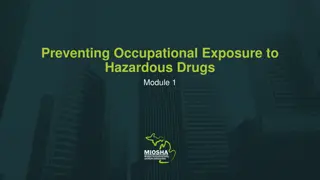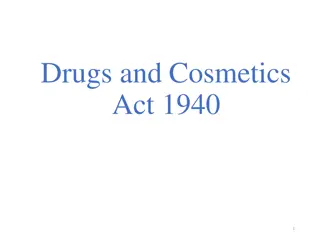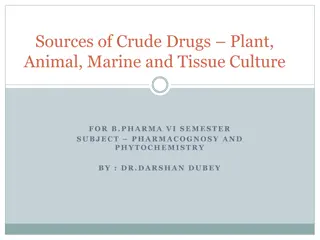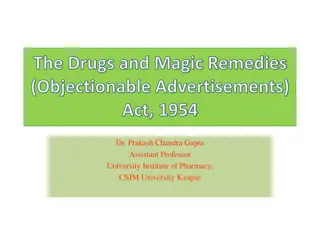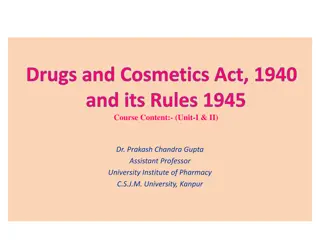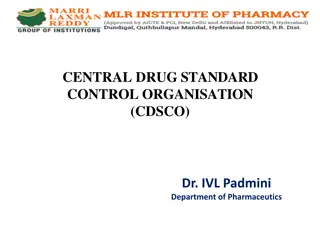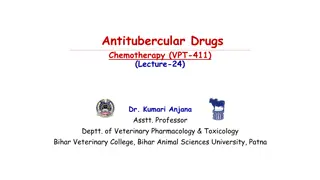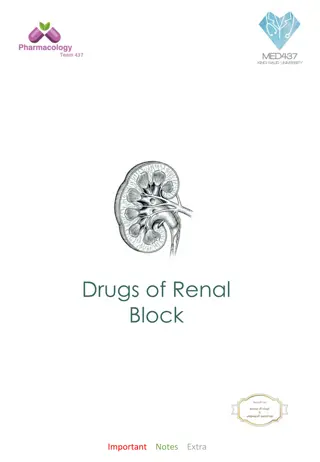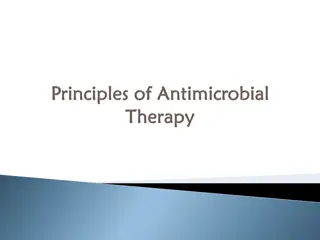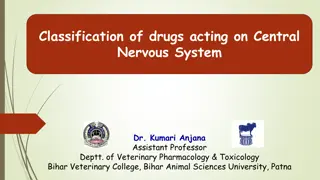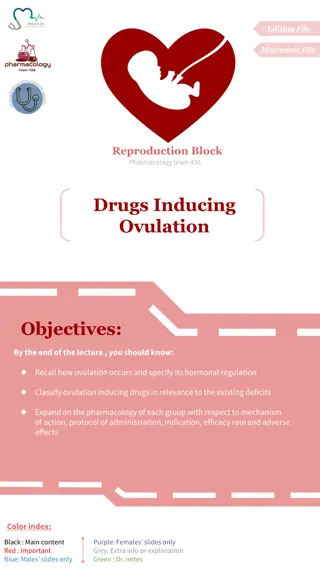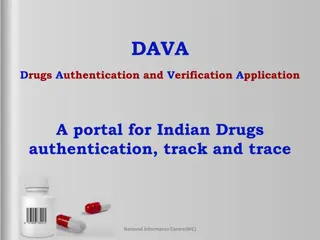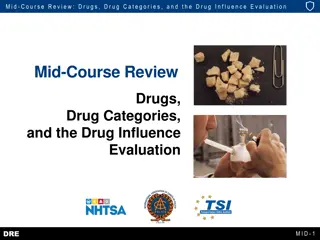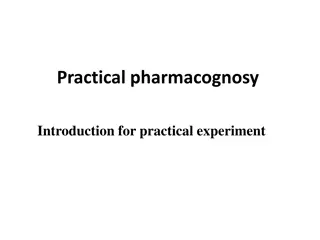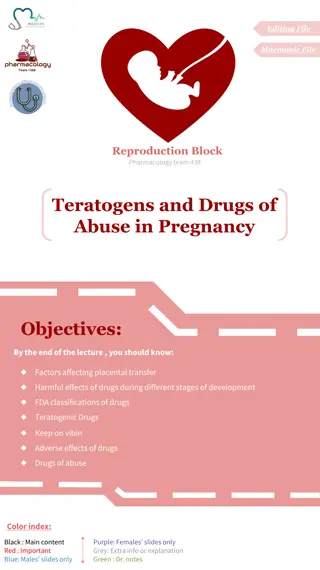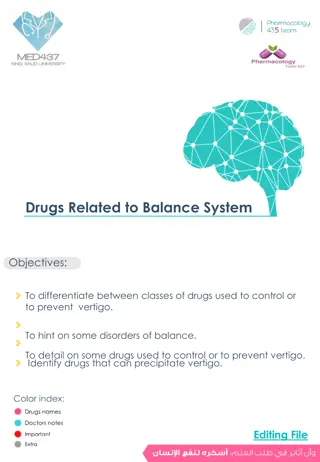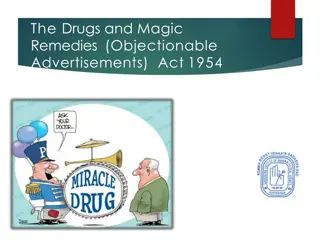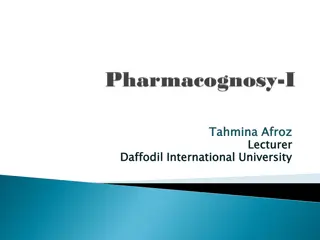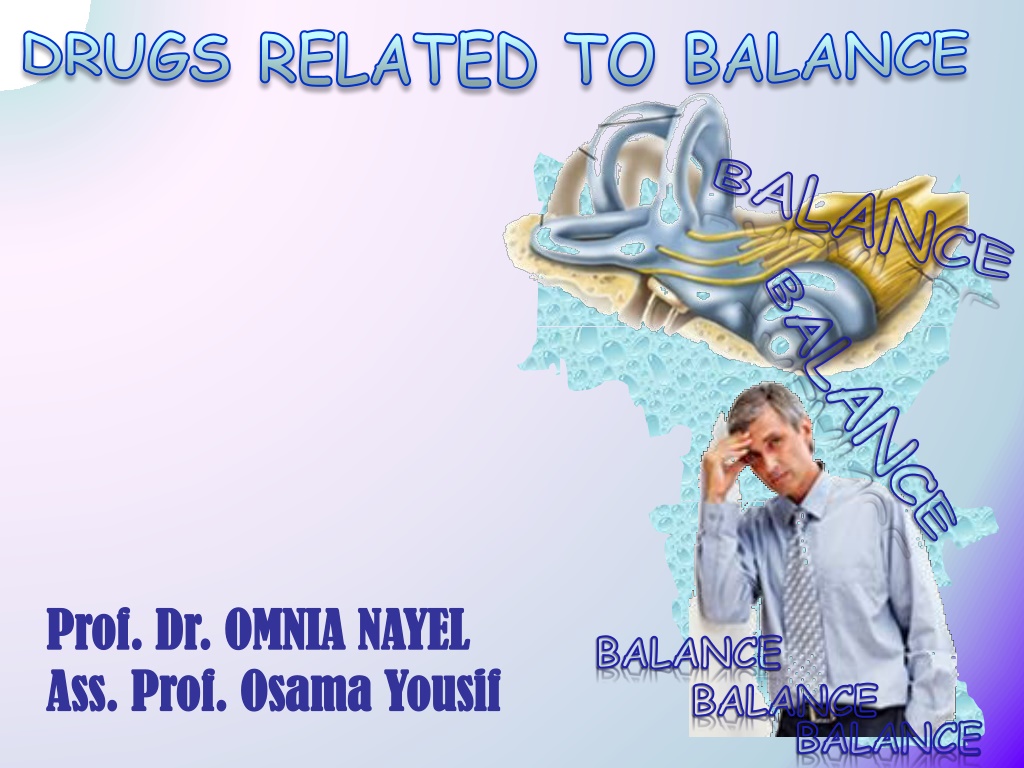
Understanding Drugs for Balance Disorders
Explore the realm of drugs related to balance disorders, from recognizing causes and symptoms to identifying transmitters involved. Learn about classes of drugs used in management protocols and those that can precipitate vertigo. Discover therapeutic management strategies and vestibular suppressants aimed at controlling vertigo episodes effectively.
Download Presentation

Please find below an Image/Link to download the presentation.
The content on the website is provided AS IS for your information and personal use only. It may not be sold, licensed, or shared on other websites without obtaining consent from the author. If you encounter any issues during the download, it is possible that the publisher has removed the file from their server.
You are allowed to download the files provided on this website for personal or commercial use, subject to the condition that they are used lawfully. All files are the property of their respective owners.
The content on the website is provided AS IS for your information and personal use only. It may not be sold, licensed, or shared on other websites without obtaining consent from the author.
E N D
Presentation Transcript
DRUGS RELATED TO BALANCE BALANCE BALANCE Prof. Prof. Dr. Ass. Ass. Prof. Prof. Osama Dr. OMNIA NAYEL OMNIA NAYEL Osama Yousif BALANCE Yousif BALANCE BALANCE
DRUGS RELATED TO BALANCE ILOs: BALANCE Recognize causes and symptoms of balance disorders. Identify the transmitters involved in vestibular transmission Segregate classes of drugs used in the management protocols to control or prevent vertigo Identify drugs that can precipitate vertigo BALANCE BALANCE BALANCE BALANCE
thumbnail Drugs used to control or prevent vertigo episodes
THERAPEUTIC MANAGEMENT Vestibular Suppressants Prevent Recurrence Intend to suppress acute attacks [ tame vertigo episodes] Diuretics (but not loop diuretics) ( fluid retention) Intend to dull brain response to vestibular signals from inner ear Corticosteroids L-type Ca Channel Blockers ( ( inflammation) + Spinning Emesis vasodilatation) cinnarazine, flunnarazine, verapamil NB. If migraine is also present add on its treatment
Spinning VESTIBULAR SUPRESSANTS Betahistine ??? H1agonists H3antagonists Benzodiazepines promote & facilitate central vestibular compensation via GABA modulation Lorazepam Clonazepam Diazepam
Betahistine Histamine Mediator Neurotransmitter Agonist Antagonist CNS ANS H 1 + H 2 + H 1 H 3+ H 3 -ve presynaptic autoregulation
VESTIBULAR SUPRESSANTS BETAHISTINE H1agonist H3antagonist Weak agonist at H1receptors regulates inner ear fluid homeostasis (labyrinthine circulation ) inducing vaso- dilatation in middle ear relieves pressure in inner ear Strong antagonism of H3autoreceptors augmenting effects on H1receptors in the brain - H synthesis in tuberomammillary nuclei of the posterior hypothalamus to promote & facilitate central vestibular compensation - H release in vestibular nuclei levels of neurotransmitters such as 5HT in the brainstem, which inhibits the activity of vestibular nuclei.
VESTIBULAR SUPRESSANTS BETAHISTINE Pharmacokinetics Tablet form , rapidly & completely absorbed t =2-3h Partially metabolized ( active) & excreted in urine ADRs Contraindications Headache Nausea Gastric effects appetite and weight loss Peptic ulcer Pheocromocytoma Bronchial asthma
Emesis VESTIBULAR SUPRESSANTS ANTIEMETICS H1 antagonist Antihistamine Anticholinergic Meclizine Dimenhydrinate Phenothiazines + Dopamine antagonists + Sedation Prochlorperazine Promethazine Dopamine Antagonists Dopamine Antagonist + Gastroprokinetic Metoclopramide Domperidone NO cross BBB
ANTIEMETICS H1 antagonist Antihistamines DIMENHYDRINATE (Dramamine) Block H1receptors in CRTZ (chemoresepter target zoon ) Sedative effects Weak anticholinergic effects > antiemetic < sedating than Meclizine Indications In vertigo In control of MOTION SICKNESS by excitability in the labyrinth & blocking conduction in vestibular-cerebellar pathways. ADRs Contraindications Glaucoma Prostatic enlargement Sedation Dizziness Anticholinergic side effects
ANTIEMETICS A Piperazine Phenothiazines PROCHORPERAZINE Block dopamine receptors at CRTZ Antipsychotic , some sedation + antiemetic Indications One of the best antiemetics in vertigo (sedating & has some vestibular suppressant action) METOCLOPRAMIDE A potent central antiemetic acting on CRTZ Has some sedating action Has potent gastroprokinetic effect Indications In vertigo Dopamine Antagonists ADRs Restlessness or drowsiness Extrapyramidal manifestations on prolonged use
thumbnail Drugs inducing vertigo
DRUGS INDUCING VERTIGO Are those drugs (or chemicals) producing destructive damaging effects on structure or function of labyrinthine hair cells &/ or their neuronal connections VESTIBULOTOXINS MIXED OTOTOXINS Drugs altering fluid & electrolyte Diuretics Antihypertensives . Drugs altering vestibular firing Anticonvulsants Antidepressants Sedative hypnotics Alcohol Cocaine FUNCTIONAL
DRUGS INDUCING VERTIGO MIXED OTOTOXINS Aminoglycoside antibiotics; gentamycin, kanamycin, neomycin, streptomycin, tobramycin, netlimycin Fluroquinolines, Vancomycin, Polymixin Quinine, chloroquine, quinidine Nitrogen mustard Loop diuretics NSAIDs Tobacco STRUCTURAL FUNCTIONAL
DRUGS INDUCING VERTIGO STRUCTURAL Aminoglycoside antibiotics; streptomycin, kanamycin, neomycin, gentamycin, tobramycin, netlimycin Apoptosis Neomycin activate caspases Death Receptor Pathway Gentamycin evoke free radicals Mitochondrial Pathway local blood flow biochemical changes alter electromechanical transduction Quinine, chloroquine, quinidine Loop diuretics NSAIDs Firing of impulses FUNCTIONAL

